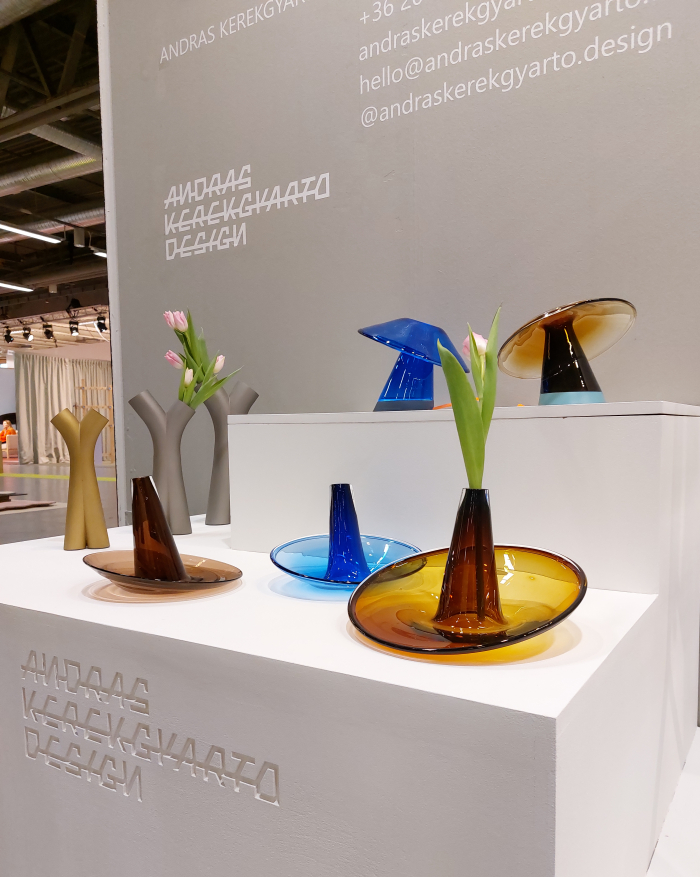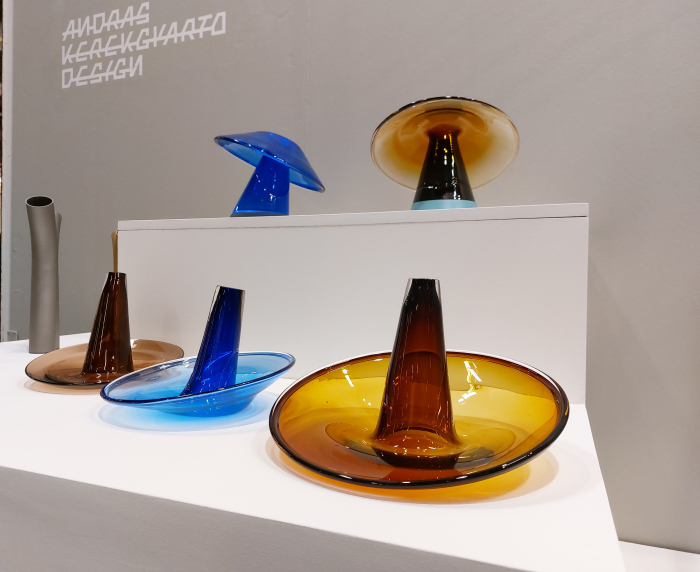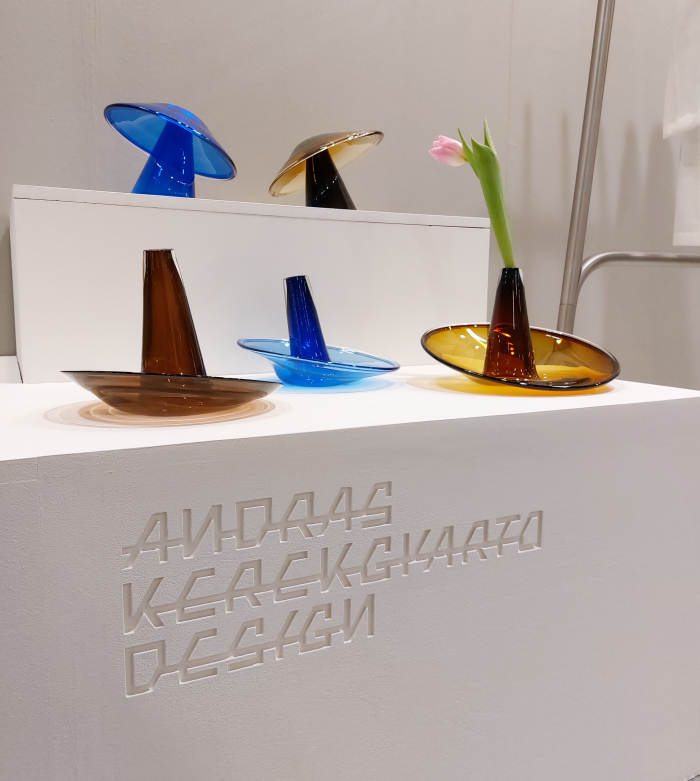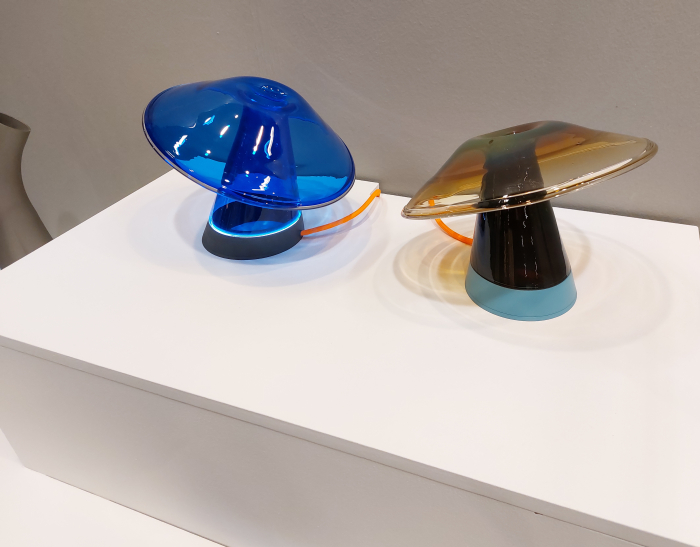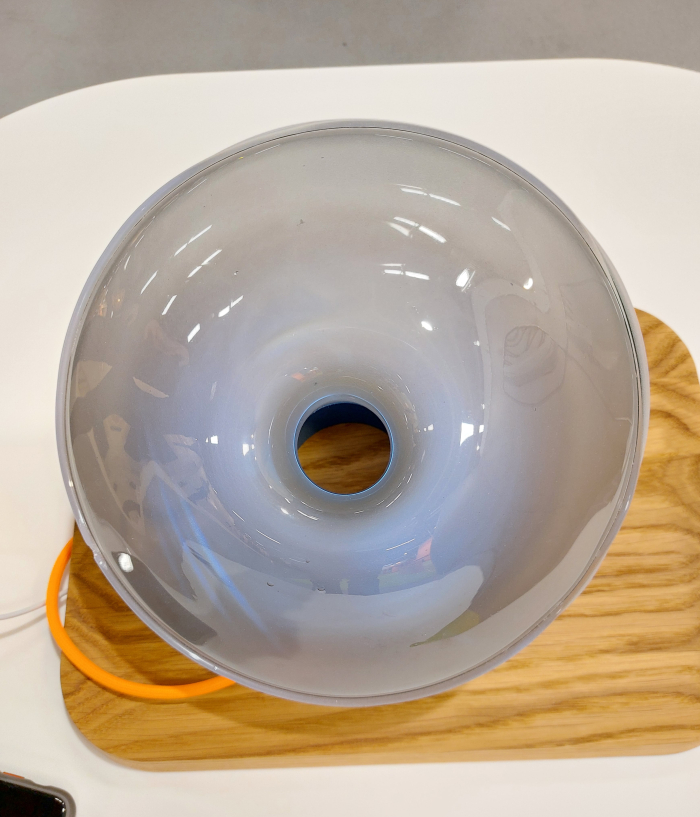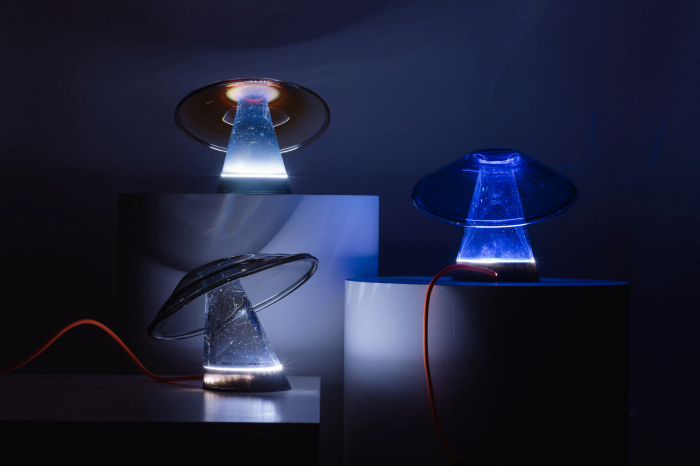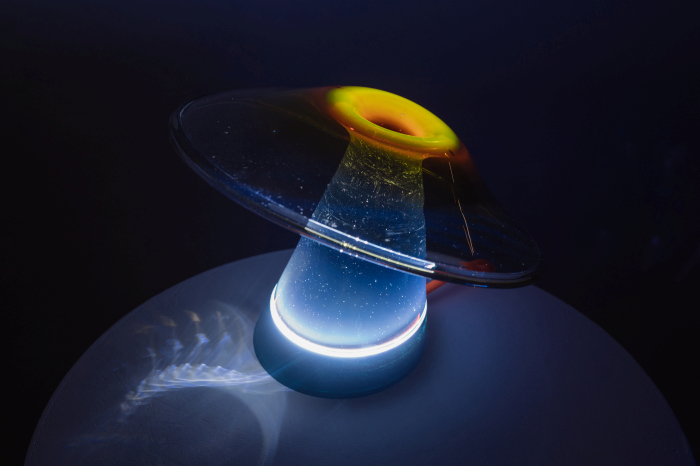As noted in our (brief) introductory post from Stockholm 2023, alongside all the problematic aspects of furniture fairs, one of the advantages, one of the joys of the format, is the chance to catch up with folks, the opportunity they offer to meet with, if oft all too briefly, individuals whose paths you don't cross on a regular basis; individuals such as Budapest based András Kerékgyártó, a designer who we greatly enjoy talking to, or more accurately who we greatly enjoy listening too, listening to his positions, his reasonings, his insights, to the future he's feeling his way towards. But, highly regrettably, and despite our genuine best efforts, we make it far, far, too infrequently to Budapest.
But András was in Stockholm, in the Greenhouse, in that space in Stockholm Furniture Fair for students and young designers, that location of a shielded nurturing of youthful coming generations away from the ravages of disease, the vagaries of climate and the brutality of humans, to be found in the main fair; and where we not only enjoyed talking, listening, to András but very much enjoyed talking, listening, to Cnidaria.
Representing András's first foray into glass, a foray undertaken with a Hungarian glass-blower — yes, we forgot to ask their name, apologies! — a cooperation which enabled András to achieve the flowing form he sought, to achieve the effortless transfer from stem to bowl he had envisioned, a change of form and direction and scale and pace in one unbroken movement, one contorting, inverting, glissando, that defines Cnidaria; a movement that, in many regards, isn't natural for glass to undertake, is a flowing back on and through itself, is as if you were to pull a point in the bowl back through the bowl and extend it as a hollow tube away from the bowl, and thereby creating a surface that starts on the outside but ends on the inside and another that moves from in to out. If one so will, where the ectoderm becomes the endoderm, and vice versa. And which took time to develop and achieve, time to understand and reliably reproduce, time spent in a dialogue between designer and crafter. And thus the Cnidaria project represents a very neat example of that important interplay between craft and design, helps underscore that craft and design shouldn't be considered opposing but very much complimenting disciplines which can and should learn from, and thereby extend, one another.
And although the Cnidaria lamp and Cnidaria vase are two very different objects, much as amongst the aquatic Cnidaria the jellyfish and the sea anemone are two very different objects, they not only, as with the jellyfish and the sea anemone, share common characteristics that unite them, both formal and conceptual characteristics, but exist as imprecise mirrors of one another, as inversions complimenting one another while highlighting their differing characters.
Aside from the unbroken movement from stem to base, that contorting, inverting, glissando, the Cnidaria lamp is primarily defined by its hollowness, a hollowness which not only means there is no technology to be seen within, one views down the stem to the surface on which it stands, but also means that as an object it has a translucence; when switched off it refracts that ambient light it doesn't adsorb and reflect and thereby allowing it to be a component of its environment rather than exist as a coloured object in a space. While the integration of the light source in the base of the hollow stem means that when switched on the light isn't contained within, isn't locked behind, a glass shade, but passes through the glass, becomes one with the glass, the glass illuminates not a light source; a trick, in many regards, first explored in acrylic glass by the mid-20th century Radicals and Postmodernists, perhaps most famously in the 1962 Acrilica by Gianni and Joe Colombo, and a trick which contemporary lightning technology makes ever easier to achieve, if not necessarily as elegantly as in the Cnidaria lamp. Whereby, yes, under the bright lights of a trade fair, certainly those of a Stockholm Greenhouse, it is difficult to see the illumination in its full effect, but from what we could see, the light passing through, becoming one with, the natural impurities of the mouth-blown glass transform the character, enhances and reinforces its origins in a natural world humans still don't fully understand, far less know, while, according to András, whom we have no cause to doubt, one also gets unexpected colouration in the bowl, more specifically at the moment the form and direction and scale and pace begin to change, as the light diffracts through the natural impurities of the coloured glass and which, we can well image adds to its cnidarian character. A character also expressed by its the forward tilting head atop a dynamic slanting body, a formal expression which not only bequeaths the Cnidaria lamp an approachable, communicative, organic form, charmingly abstracts what would otherwise be but a combining ot two geometric forms, but also bequeaths the work a vitality, a movement, an easy drifting through space and time. And oceans.
A vitality, a movement also very much found in the Cnidaria vase, if not the easy drifting through space and time and oceans, the Cnidaria vase is sedentary, wafting and waving in harmony with the movement around it, but remaining firmly anchored. Is a vase which, as the design concept demanded, echoes the slanting and self-confident off-centredness of the lamp, or vice versa; a vase which, again as with the lamp, presents itself as a very intelligently scaled and proportioned object whose translucence, flowing form and visual ease brings an unforced, undemanded, emotional to the functional. A functional that isn't fully fixed: while the hollow stem is calling out for the addition of decoration, flowers, ideally flowers requiring little water, there is no base to the hollow stem, or perhaps dried, drying flora, or long feathers, the bowl's function is, as with the bowl, wide open: We suggested that you could use the base as a fruit bowl or for storing keys, wallets, phones, chewing gum, yo-yo's etc... András suggested letting falling petals collect in it and fill it. András just has more poetry in his soul then we do. Or will ever have.
And while, yes, one could argue that as objects the Cnidaria lamp and Cnidaria vase with their flowing organic forms, clear references to the natural world that industry seeks to master rather than to cooperate with, and dependence on a centuries old craft, are all very Art Nouveau, very Szecesszió; for our part, we'd only recommend taking that view, only recommend making that argument, in context of a William Morris or a John Ruskin's understandings of looking backwards to help you find a way forward. Cnidaria are very much works with an emotion and a function far beyond the decorative or their utility, and which no-one in late-19th/early 20th century Budapest would have been able to appreciate.
More information on András and his work can be found at https://andraskerekgyarto.design/
